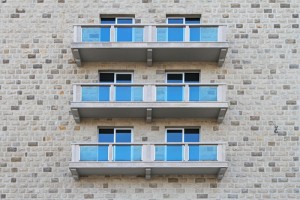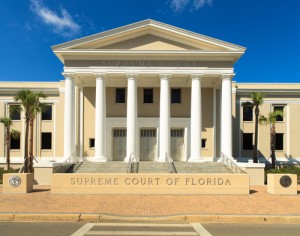Three months ago in Equinox on the Battenkill Mgmt. Ass’n. v. Philadelphia Indem. Ins. Co., 2015 VT 98 (Vt., Aug. 7, 2015), Vermont’s highest court held that a policy insuring against the “risks of . . . collapse” affords considerably broader coverage than one insuring against “direct loss [by] collapse.” While the latter covers only a falling in, the former encompasses situations in which collapse is imminent and perhaps even situations in which “the insured building’s structural integrity has degraded to the point where it cannot be safely and reliably used.” The case is a cautionary tale for underwriters everywhere, and it also contains a useful survey of “risk of collapse” jurisprudence from around the country.
 The policyholder was a management association that operated a condominium complex in Manchester. Many of the units had cantilevered balconies, and those began experiencing structural problems in 2007. By 2012, it had become apparent that joists under the balconies had suffered moisture infiltration leading to rot and deterioration, and a structural engineer recommended that they be taken out of service altogether. According to the insurer’s expert, this was attributable to “construction and design issues.”
The policyholder was a management association that operated a condominium complex in Manchester. Many of the units had cantilevered balconies, and those began experiencing structural problems in 2007. By 2012, it had become apparent that joists under the balconies had suffered moisture infiltration leading to rot and deterioration, and a structural engineer recommended that they be taken out of service altogether. According to the insurer’s expert, this was attributable to “construction and design issues.”
The insured made claim, contending that it suffered a compensable loss under an additional coverage afforded for the peril of collapse occasioned by “hidden decay;” the joists had never been inspected or exposed prior to 2012. The claim was denied, however, because the contract of insurance excluded loss caused by “[f]aulty, inadequate, or defective . . . [d]esign, specifications, workmanship, repair [or] construction.” Read more ›

 Monday saw a unanimous panel of Massachusetts’ intermediate level appellate court reject a policyholder’s ensuing loss arguments. In
Monday saw a unanimous panel of Massachusetts’ intermediate level appellate court reject a policyholder’s ensuing loss arguments. In  The policyholder had a building in Burnsville that had been vacant for four months when the mortgagee/bank was added to the contract of insurance. Seven months later, while still vacant, the structure was vandalized. The bank submitted an insurance claim, but this was denied because the policy recited that loss by vandalism was excluded “[i]f the building where loss or damage occurs has been vacant for more than 60 consecutive days before that loss or damage occurs.”
The policyholder had a building in Burnsville that had been vacant for four months when the mortgagee/bank was added to the contract of insurance. Seven months later, while still vacant, the structure was vandalized. The bank submitted an insurance claim, but this was denied because the policy recited that loss by vandalism was excluded “[i]f the building where loss or damage occurs has been vacant for more than 60 consecutive days before that loss or damage occurs.” The insureds owned a house in Tarzana. In early 2013, concerned over recurring watermarks, they had a general contractor and a structural engineer inspect the rear deck on the home. The consultants found severe decay from corrosion in steel beams beneath the structure in an area concealed by the deck floor, and they advised the policyholders that the upper portion of the house was in danger of falling. The insureds immediately took steps to remediate the home, and they ultimately spent $91,000 in doing so.
The insureds owned a house in Tarzana. In early 2013, concerned over recurring watermarks, they had a general contractor and a structural engineer inspect the rear deck on the home. The consultants found severe decay from corrosion in steel beams beneath the structure in an area concealed by the deck floor, and they advised the policyholders that the upper portion of the house was in danger of falling. The insureds immediately took steps to remediate the home, and they ultimately spent $91,000 in doing so.  The insureds owned a home in Little Silver that was inundated by 20”-36” of water when a creek behind their property overflowed its banks during Superstorm Sandy on October 29, 2012. They initially attempted to clean the house themselves, removing the carpeting and hiring a certified cleaning and restoration company. When the president of the clean-up concern visited the site, however, he told everyone to stop what they were doing, saying that the water was “very unhealthy and dangerous.” He later opined that it was Category 3 water – a substance that is “highly contaminated and could cause death or serious illness if consumed by humans.”
The insureds owned a home in Little Silver that was inundated by 20”-36” of water when a creek behind their property overflowed its banks during Superstorm Sandy on October 29, 2012. They initially attempted to clean the house themselves, removing the carpeting and hiring a certified cleaning and restoration company. When the president of the clean-up concern visited the site, however, he told everyone to stop what they were doing, saying that the water was “very unhealthy and dangerous.” He later opined that it was Category 3 water – a substance that is “highly contaminated and could cause death or serious illness if consumed by humans.”  Two weeks ago in
Two weeks ago in  The insured owned a seasonal cabin in Duck Creek that was not used during the winter months, and his practice was to leave both the water and the heat turned on. At some point during the early months of 2011, a valve under the sink in the basement wet bar failed. The consequences were discovered when the wife of one of his employees visited the building in April, 2011. According to the insurance adjuster’s report, there was “extensive mold damage throughout the house” and “[m]old upstairs on every wall and ceiling in [the] home.” Water district records showed that the policyholder’s water bill had jumped from $15 in January to $93.75 in March, but this went unnoticed because the bills were “automatically paid” by his office.
The insured owned a seasonal cabin in Duck Creek that was not used during the winter months, and his practice was to leave both the water and the heat turned on. At some point during the early months of 2011, a valve under the sink in the basement wet bar failed. The consequences were discovered when the wife of one of his employees visited the building in April, 2011. According to the insurance adjuster’s report, there was “extensive mold damage throughout the house” and “[m]old upstairs on every wall and ceiling in [the] home.” Water district records showed that the policyholder’s water bill had jumped from $15 in January to $93.75 in March, but this went unnoticed because the bills were “automatically paid” by his office.  The problematic portion of the old forms was the three-word phrase “where you reside.” The homeowners insuring agreement in the existing ISO program recited that coverage was afforded for “the dwelling on the ‘residence premises’ shown in the Declarations[.]” “Residence premises” was then defined as follows:
The problematic portion of the old forms was the three-word phrase “where you reside.” The homeowners insuring agreement in the existing ISO program recited that coverage was afforded for “the dwelling on the ‘residence premises’ shown in the Declarations[.]” “Residence premises” was then defined as follows: The insured owned a three-unit residence in Boston which was vacant in December of 2009. The heat was turned off at the time. On December 19th, records from the city’s Water and Sewer Commission showed that the rate of water usage at the property “increased dramatically” in the words of the opinion – it jumped seventeen-fold. The policyholder visited two days later on December 21st, but he did not go into any of the individual units and saw no damage. On December 28th, the Commission notified that insured of the spike in usage, and he returned to the property and found a leak under a sink in the third floor apartment and substantial water damage to the structure.
The insured owned a three-unit residence in Boston which was vacant in December of 2009. The heat was turned off at the time. On December 19th, records from the city’s Water and Sewer Commission showed that the rate of water usage at the property “increased dramatically” in the words of the opinion – it jumped seventeen-fold. The policyholder visited two days later on December 21st, but he did not go into any of the individual units and saw no damage. On December 28th, the Commission notified that insured of the spike in usage, and he returned to the property and found a leak under a sink in the third floor apartment and substantial water damage to the structure.  For years, Florida courts have been seesawing between two different doctrines to determine whether there is coverage under a property policy when two perils – one excluded and one included — combine to cause a loss. Two districts of the state’s intermediate level appellate court have applied one test and a third has applied another, with the most recent decision being
For years, Florida courts have been seesawing between two different doctrines to determine whether there is coverage under a property policy when two perils – one excluded and one included — combine to cause a loss. Two districts of the state’s intermediate level appellate court have applied one test and a third has applied another, with the most recent decision being 